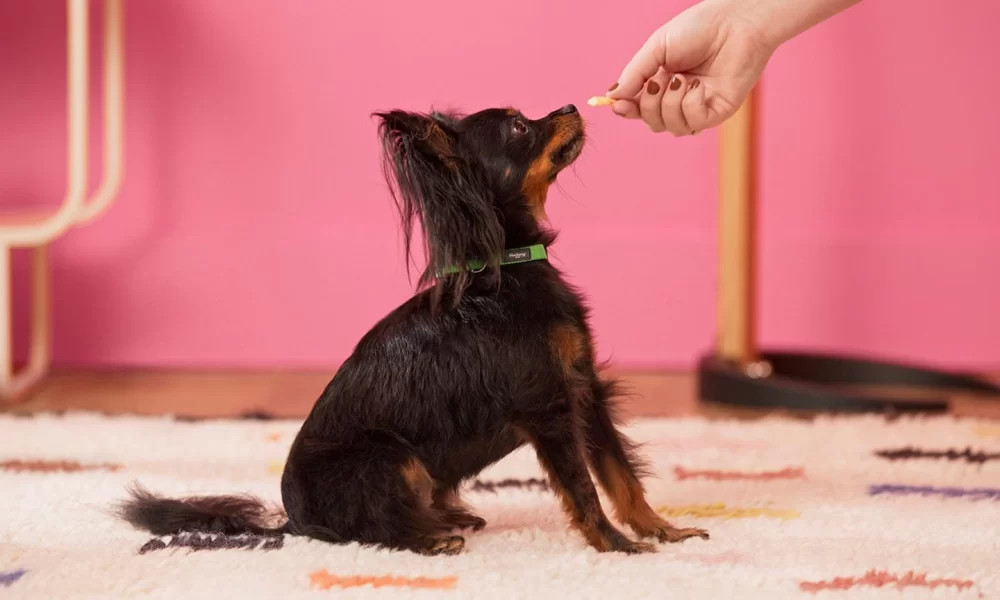Obedience Training for Dogs: 4 Essential Cues Every Dog Should Learn
When you first bring a puppy into your home, one of the first lessons you'll likely teach them is the important "sit" command. But there's more to dog obedience than just "sit." There are a few other key cues every dog should master. These fundamental commands can help improve impulse control, promote good behavior, and even save lives in critical situations. Keep in mind, “mastery” of a cue means your dog will respond promptly, even in distracting environments. Training is an ongoing process throughout your dog's life, but it’s also a great way to strengthen the bond between you and your dog. Plus, it’s fun!
1. Perfecting the “Down” Command
While teaching your dog to lie down is a vital skill, many pet owners unintentionally make the "down" cue less effective. They might find themselves slapping the ground to get their dog into position. But can your dog respond to the word “down” without any body language cues from you? Try this test: remain silent and just bend over to slap the ground. Your dog will likely respond right away. Now, try standing up straight and saying “down” without giving any physical gestures. If your dog doesn't move, it’s time to polish this command.
Start by luring your dog into a down position as usual, then reward with a treat. As you continue practicing, reduce the use of your hand gestures until you can simply say "down" and your dog will automatically lie down. Consistent practice in various settings will help your dog understand that this command applies everywhere—no matter where they are.
2. Strengthening the “Stay” Command
While many dogs learn "stay" in a specific scenario, this often involves repeating the word “stay” over and over as you take small steps back. To make the "stay" command truly reliable, you’ll need to build it from scratch. Start with a simple "stay" in the place you normally practice, saying the command once. Gradually increase the distance between you and your dog, and eventually work up to turning your back and walking away.
Once your dog can hold the stay in different parts of the house, begin practicing outside. Then, incorporate real-life distractions. For example, try to have your dog maintain a stay while you’re unloading the dishwasher or putting away groceries. The goal is to use this command in everyday situations to keep your dog safe and under control.
3. Developing a Strong Recall
Teaching your dog to come when called is a fundamental skill, but it requires strong positive associations to ensure it works even in distracting environments. Often, dogs associate coming when called with the end of their fun time, which can make them reluctant to respond. If your dog tends to ignore the recall command, try teaching a new, neutral word like “here” to build a stronger response.
Begin by using the word “here” inside your home, and encourage your dog to come with a whistle or clapping. Reward them with high-value treats, such as chicken or cheese, when they arrive. Be sure to praise them warmly each time. Once your dog reliably responds at home, start practicing in the yard, and eventually in more distracting environments. A consistent recall requires ongoing practice and positive reinforcement to create a strong habit.
4. Teaching Your Dog Not to Jump
Jumping on guests is a common complaint for many dog owners. Dogs often learn that jumping up gets them attention—whether it’s positive or negative. The good news is that you can teach your dog to stop jumping using body language cues. One of the easiest ways is to use the “arm-cross sit” cue, which encourages your dog to automatically sit when meeting new people.
Start by standing still and crossing your arms, then move around the room. Your dog will likely sit, especially if they’ve been conditioned to sit for treats. As soon as your dog sits, reward them with a treat and praise. Practice this in different rooms of your house, particularly in areas where guests will be. Once your dog has learned this cue, ask friends and family to help by crossing their arms when they approach your dog. The more your dog learns that sitting gets them rewards, the less they’ll jump on people.
Conclusion
Training your dog is not only important for ensuring they follow basic commands, but it also strengthens your relationship and fosters a sense of security for your pet. By teaching your dog cues like “down,” “stay,” “here,” and “sit” (for anti-jumping), you will set them up for success in both everyday life and potentially dangerous situations. Keep practicing, stay patient, and have fun with the training process!












